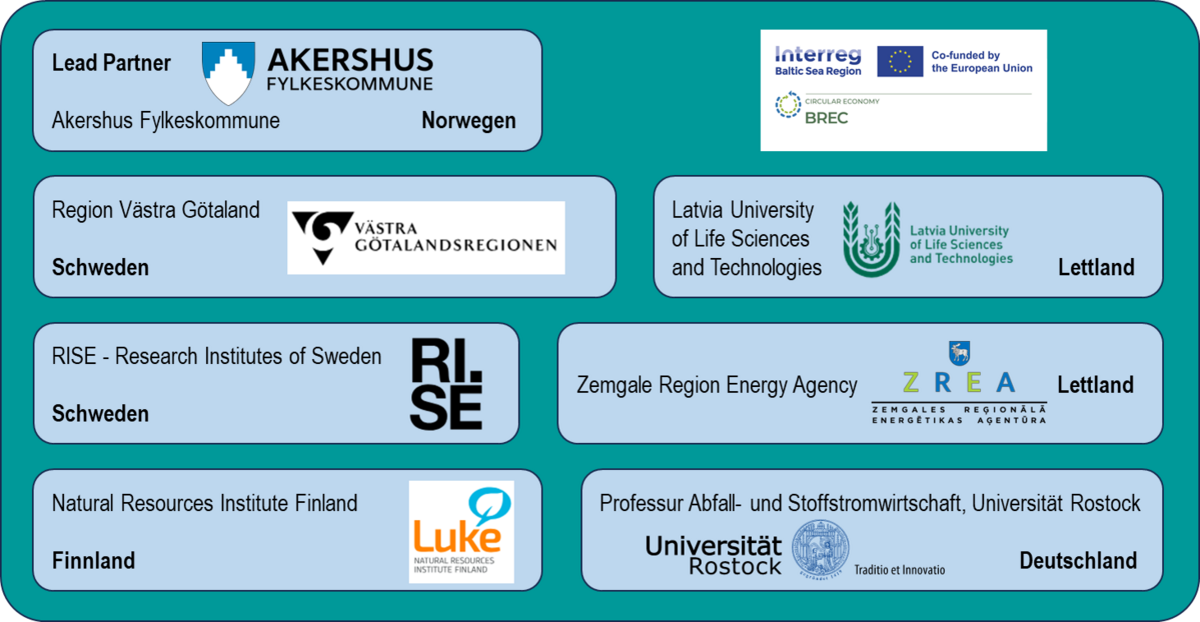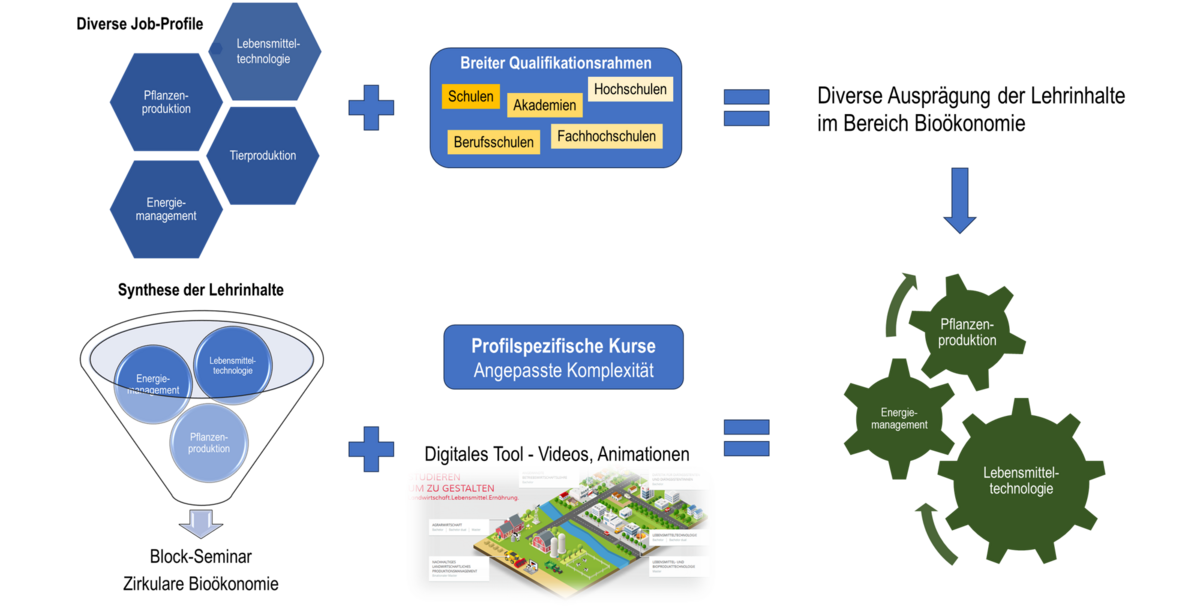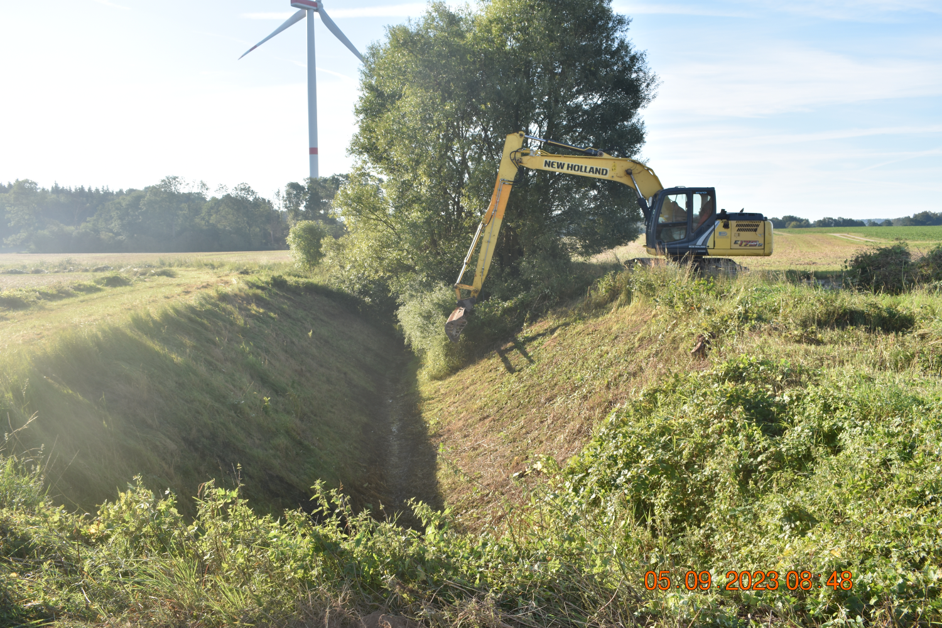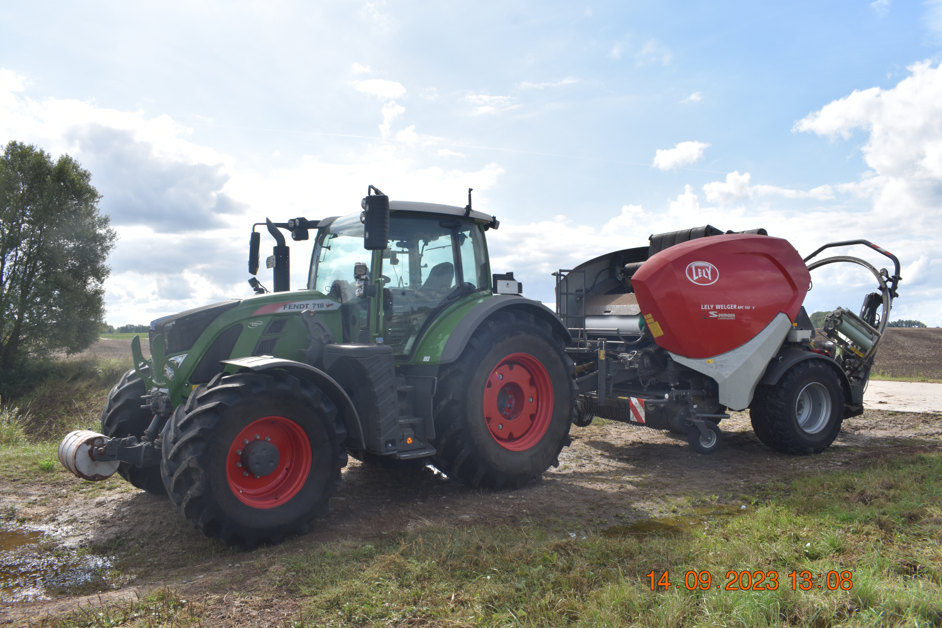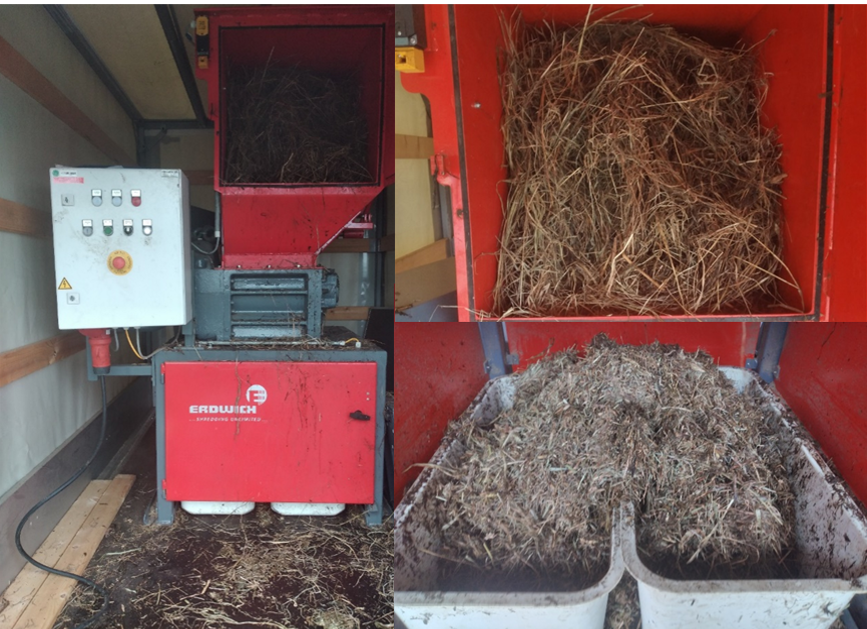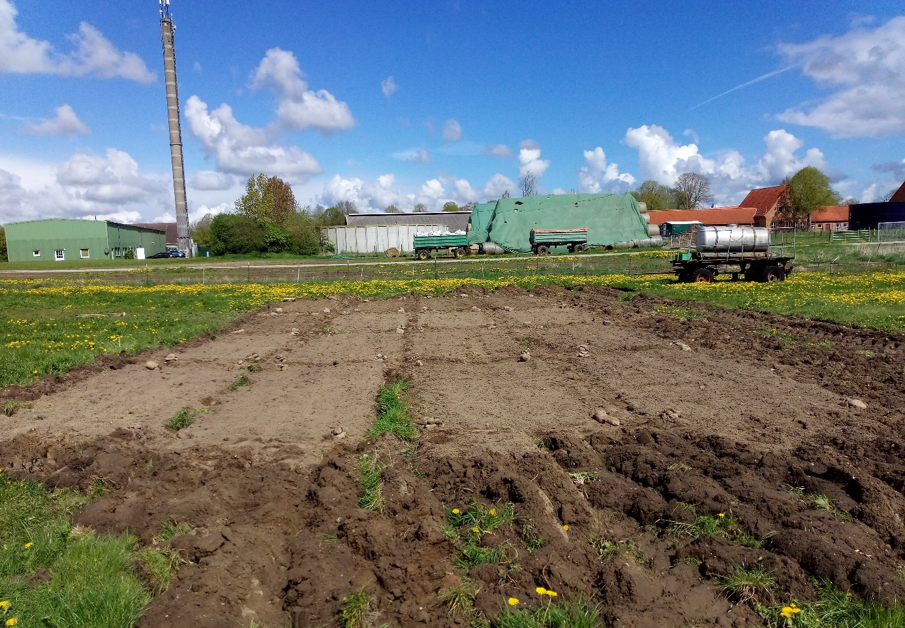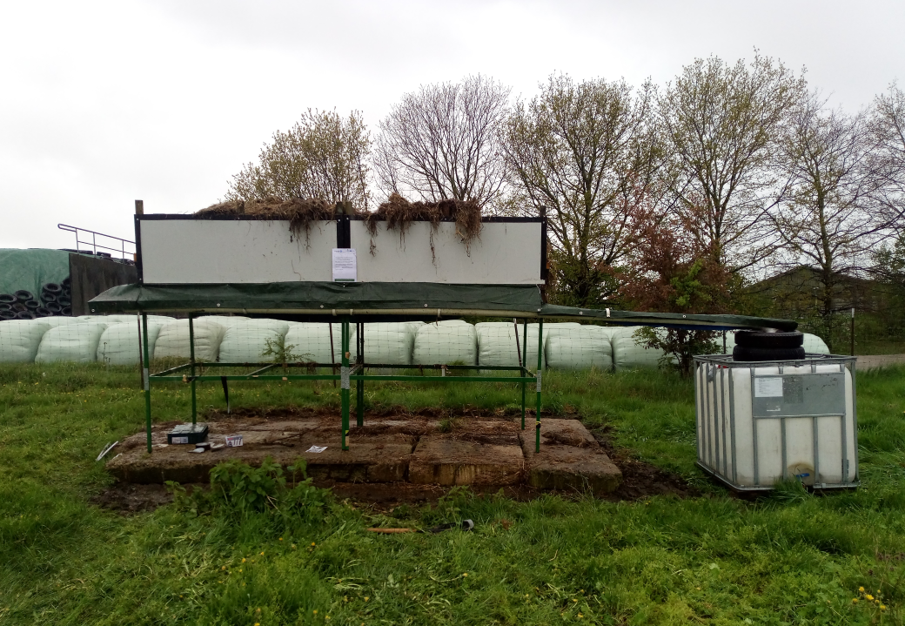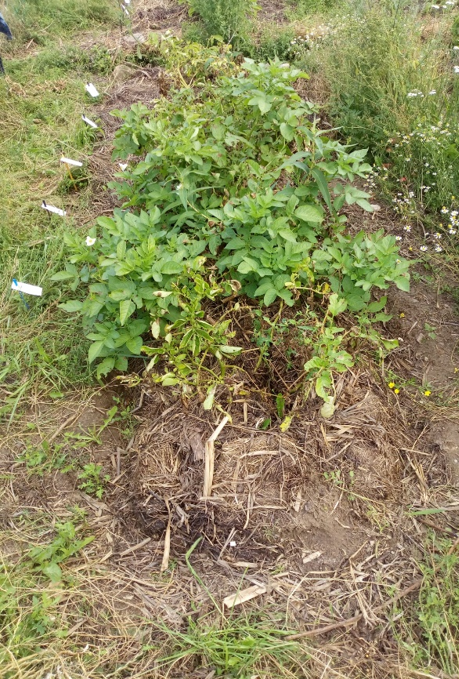Bridging the Gap between Research and Education in the Circular Bioeconomy
The most important regional goals for the circular bioeconomy in Mecklenburg-Western Pomerania include the complete conversion of energy production to renewable energy sources as well as more efficient production, utilization and recycling processes. The agricultural sector in particular has undergone enormous technological development, which is making sustainable implementation increasingly difficult. The EU BREC project has identified several key technologies - such as biogas production, protein extraction, phosphorus recovery, nitrogen enrichment, biochar production and the associated pre- and post-treatment processes - that are central to the transition to a circular economy. One of the main objectives of the BREC project is to work with an international team of researchers and educators to create an information database detailing how the different technologies can effectively address specific agricultural challenges. This resource will serve as a comprehensive tool-kit that will benefit agricultural education institutions in training the next generation of farmers as well as experienced practitioners, advisors and associations, and business representatives.
Acquisition, treatment and utilization of alternative substrates in agricultural production processes
This study focuses on the acquisition, pre-treatment and utilization of alternative substrates in agricultural production processes using the example of biomass from water maintenance. The majority of second-order water bodies subject to maintenance are located in the direct environment of agricultural areas and operating sites. It therefore makes sense to consider the possibility of integrating water care material into agricultural production processes for material and energy recovery. Studies show that an estimated 36,000 tons of dry matter per year are available for this purpose in Mecklenburg-Western Pomerania alone as part of annual water maintenance [1]. The subject of the study was an approx. 1.8 km long section of a typical semi-urban second order water body in the North German Lowlands. The cooperation partner was the farm Gut Dummerstorf GmbH. A two-phase experimental complex was jointly designed. The aim of the investigations is to develop pilot concepts for energy production and nutrient recovery from free available biomass resources. From an agricultural perspective, it would make sense to utilize suitable water body associated biomass in a composting process or biogas plant [2]. The evaluation of the experiments and field trials provide information on whether the biomass obtained from water maintenance can be integrated into agricultural production processes using various methods and can be fully and practically utilized in terms of both material and energy recovery.
Acquisition
In order to implement this innovative utilization concept, it was necessary to network the relevant stakeholders from water management and agriculture as well as decision-makers. In a departure from standard practice, an adapted water maintenance concept was jointly developed in order to avoid the input of contaminants and other pollutants (sand, etc.) and to ensure the complete acquisition of biomass from the maintenance profile (Pic. 1). After the substrate was deposited on the maintenance trass, it was picked up by a compactor or baling press (Pic. 2). An economically viable area output was achieved.
Treatment
The corresponding pre-treatment scenarios depend on the condition of the biomass after water maintenance and the respective recovery path. Under certain circumstances, drying of the substrate may be an option. This can be done, for example, by operating a Joskia silo vehicle developed for this purpose. An air stream is used to bring the substrate to a suitable dry matter content for storage and utilization. In this concept, the waste heat from the combined heat and power plant of the company's own biogas plant was used.
When using water care material as co-substrate in the production of biogas, it must be shredded in advance. In order to ensure adequate pumping ability of the biomass after mixing the substrates in the pre-fermentation pit, the material is cut to a particle size of 2-4 cm. This can be done when the substrate is picked up in the baling press or by treating it in a mobile shredder unit or the farm's own feed wagon. In this way, even very fibrous substrate can be used more effectively and without disturbing the biogas process.
Utilization - Concept 1 – Biogas production
In an initial trial phase between September and October 2023, the utilization of water care material as a co-substrate for the production of biogas was investigated. The daily input of corn silage was to be substituted by approx. 10 %. During the trial, a total of approx. 6,5 tons of fresh biomass from watercourse maintenance were used in the biogas plant. No significant changes in the quantity and quality of the biogas produced or disturbances in the process were recorded during the trial.
Utilization - Concept 2 – Nutrient recovery
In a second trial phase between April and August 2024, the utilization of water care material for nutrient recovery was tested. The fraction of the biomass that is not used for biogas production can be used for the production of valuable soils, organic fertilizers and phytosanitary products. This was realized in a technically optimized composting process (Pic. 3) in which the leachate from the biomass could be collected. During the period of fertilizer and phytosanitary product production (90 days), a total of 400 kg fresh matter compost substrate for field cultivation and 480 liters of leachate for irrigation were produced.
Crop production
These products were tested for their practical application in a trial for the cultivation of food potatoes. On an area of approx. 200 m2, 16 plots were planted for the cultivation of food potatoes. The cultivation trial was carried out in several repetitions. Different variants of organic fertilization and crop care were compared with conventional cultivation and fertilization with mineral fertilizers.
The results show that the potato crops with organic fertilization have a higher yield compared to the conventionally fertilized potatoes. In addition, the replicates with the leachate treatment have significantly healthier surface plant parts (Pic. 4 and 5). They show significantly fewer traces of pests such as beetles or slugs. In addition, these plants were also vital for more than 2 weeks longer.
Conclusion
In the context of this study, various technical applications for the mechanical and thermal pre-treatment of the biomass recovered from water maintenance were tested and examined for their practicability. The results show that complete and practical utilization of biomass from water maintenance in agricultural production processes is feasible. By reducing the nutrient load in water bodies and increasing the biodiversity and structural diversity, the utilization of water care material represents an important addition to the implementation of the objectives of the EU WFD. The approach of harvesting highly productive, freely available biomass from water maintenance and recovery can therefore serve as a model for sustainable water management and a sustainable resource management. The necessary political organs and stakeholders for the innovation of a comprehensive value chain for the utilization of biomass from watercourse maintenance are existing and socially established or integrated in the market. The necessary instruments and technical applications are technically mature and practicable.
References
[1] Foth, S., Sprafke, J., Nelles, M. (2021): Utilization of water care material (WCM) in anaerobic digestion, 15. ROSTOCKER BIOENERGIEFORUM 16. UND 17. JUNI 2021 in Rostock
[2] LMS Agrarberatung GmbH (2017): Verwertung von pflanzlichen Abfällen aus der Gewässerunterhaltung und der Säuberung von Stränden zur Düngung und Bodenverbesserung
Links:
https://interreg-baltic.eu/project/brec/ Website
https://interreg-baltic.eu/project/brec/#output-0 Biorefinery Pilot Plant Concept - Report
https://interreg-baltic.eu/project/brec/#output-1 Biorefinery Pilot Plant Concept - Calculation tool
https://interreg-baltic.eu/project/brec/#output-2 Circular Bioeconomy E-book - Guide for teachers

